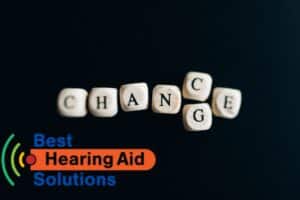Visiting an audiologist for the first time is an important step toward maintaining your hearing health. Regular hearing check-ups are especially crucial for adults aged 60 and above, as early detection can make a significant difference in managing potential hearing issues.
If you’re feeling uncertain about what to expect, this guide walks you through the entire process—from preparation to follow-up—so you can approach your appointment with confidence and peace of mind.
1. Preparing for Your Appointment
Before your visit, take a few minutes to gather the following:
- Your medical history and any previous hearing test results
- A list of symptoms or hearing concerns (e.g., trouble hearing conversations, ringing in the ears, or sensitivity to noise)
- A list of medications you currently take, as some can affect hearing
Being prepared helps your audiologist better understand your hearing journey and tailor their care to your unique needs.
2. Arriving at the Clinic
When you arrive at Best Hearing Aid Solutions, you’ll be welcomed into a calm, friendly environment designed to put you at ease.
At check-in, you’ll be asked for identification and any relevant paperwork. Having these ready will make the process quick and simple. Some clinics may still follow certain health and safety protocols, so it’s helpful to arrive a few minutes early to complete any necessary forms.
3. Meeting Your Audiologist
Your first meeting is all about building trust and understanding your hearing goals. Your audiologist will take time to discuss your symptoms, lifestyle, and any challenges you’ve experienced in daily communication.
This is your chance to ask questions or share details about specific listening situations—like difficulty hearing in restaurants or while watching TV. The more open you are, the better your audiologist can customize solutions for you.
4. The Hearing Evaluation Process
The hearing test process is simple, painless, and completely non-invasive. It typically includes:
- Visual Inspection – The audiologist checks your ear canal and eardrum for blockages, wax buildup, or other issues.
- Pure-Tone Test – You’ll listen to a series of tones at various pitches and volumes to determine the quietest sounds you can hear.
- Speech Test – You’ll repeat words or sentences to assess how clearly you can understand speech in different settings.
These tests create a detailed hearing profile, which serves as the foundation for any future recommendations.
5. Reviewing the Results
Once your evaluation is complete, your audiologist will review your results and explain them in easy-to-understand terms. You’ll receive a hearing profile that outlines your hearing levels across different frequencies.
This discussion is an excellent opportunity to ask questions—such as:
- What type of hearing loss do I have, if any?
- What are the next steps?
- How can I protect my hearing moving forward?
Understanding your results empowers you to make informed decisions about your hearing health.
6. Discussing Treatment Options
If your results indicate hearing loss, your audiologist will recommend personalized treatment options based on your lifestyle and needs. These may include:
- Hearing aids for amplification and clarity
- Assistive listening devices for specific environments (like theaters or restaurants)
- Communication strategies and follow-up care plans
Your audiologist may also schedule a follow-up visit to fine-tune your device settings and monitor your progress.
Conclusion
Your first audiology visit is the first step toward better hearing—and a better quality of life. Understanding the process helps remove uncertainty and ensures a smoother, more positive experience.
At Best Hearing Aid Solutions, we’re dedicated to providing compassionate, professional care every step of the way. Contact us today to schedule your first hearing evaluation and take the first step toward clearer, more confident communication.



